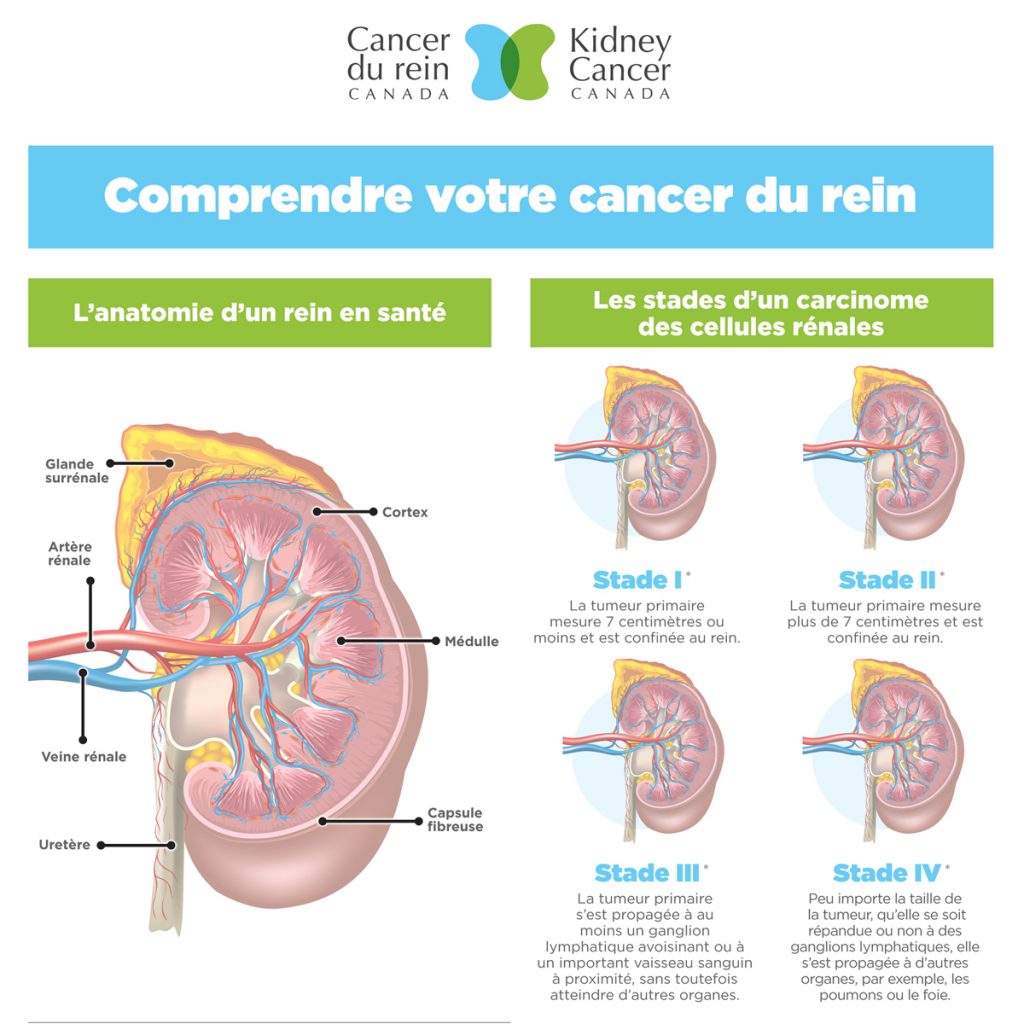Surgery represents one of two standard treatment options (the other being medication) for kidney cancer, including metastatic kidney cancer. Traditional, open surgery may be used, in which an incision is made in the skin to remove the kidney and other sites of metastases, if indicated. Laparoscopic surgery, also called minimally invasive surgery (MIS), is an option in certain cases. With this technique, surgery is performed through small incisions, guided by a camera and using thin instruments. There are important advantages over traditional surgery, such as shorter hospital stay, shorter recovery times, less postoperative discomfort, and less scarring. Unfortunately, not all surgeries for locally advanced or metastatic kidney cancer can be performed laparoscopically.
In a radical nephrectomy, the surgeon removes the entire kidney. Lymph nodes around the kidney are also removed. This is the standard approach for removing a renal cancer. An open (skin incision) or laparoscopic radical nephrectomy may be performed. The extent of the tumour, along with other considerations, determines whether a laparoscopic or open nephrectomy should be performed.
In a partial nephrectomy, the surgeon removes only the tumour and preserves the rest of the kidney. An open (skin incision) or laparoscopic partialnephrectomy may be performed. The location and the size of the tumour, along with other considerations, determine whether a laparoscopic or open partial nephrectomy should be performed.
The advantage of partial nephrectomy over radical nephrectomy (entire tumour-bearing kidney removed) is the preservation of renal function. It is very important to preserve as much renal function as possible. The preservation of a part of the tumour-bearing kidney may prevent complications related to renal insufficiency. The most serious of these complications is dialysis. Unfortunately, a partial nephrectomy cannot always be considered. Removal of the entire kidney is often necessary when the tumours are large.
This surgery removes lymph nodes that have been affected by cancer and is usually done at the time of nephrectomy.
There are two tumour ablation techniques: radiofrequency ablation and cryoablation. Tumour ablation uses a laparoscopic technique to insert a small device into the tumour-bearing kidney. Radiofrequency ablation uses extreme heat on the tumour and surrounding tissue, while cryoablation uses extreme cold. Both procedures can be done by inserting the heating or cooling device through the skin, or may require a laparoscopic surgery with the insertion of the device. Both treatment types can be used to treat kidney cancer that has spread to locations beyond the kidney. For example, radiofrequency ablation can be used to treat liver metastases. Neither of these therapies can be used to treat larger tumours and neither has the same efficacy as surgical resection. Both are reserved for the treatment of relatively small tumours.
WHAT TO EXPECT AFTER YOUR SURGERY
As with any type of surgery, there are certain risks and side effects, such as post-operative discomfort, fatigue, and weakness. Be sure to discuss the potential risks and side effects specific to your situation with your doctor prior to surgery.
RÉFÉRENCES:
Management of kidney cancer: Canadian Kidney Cancer Forum Consensus Update
Canadian Kidney Cancer Forum 2009


























































